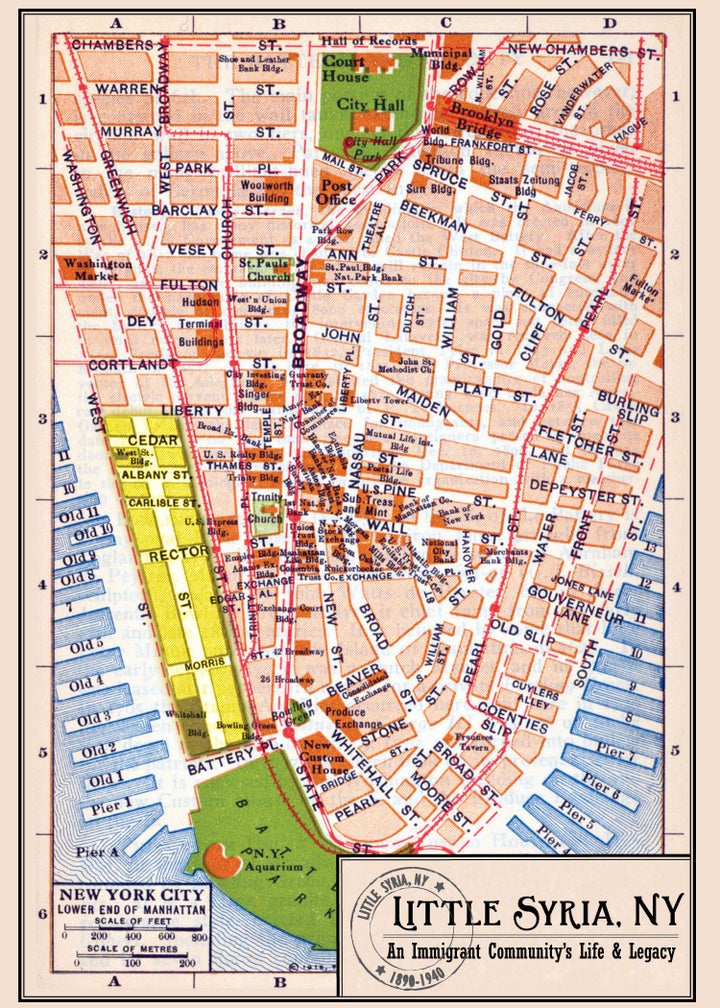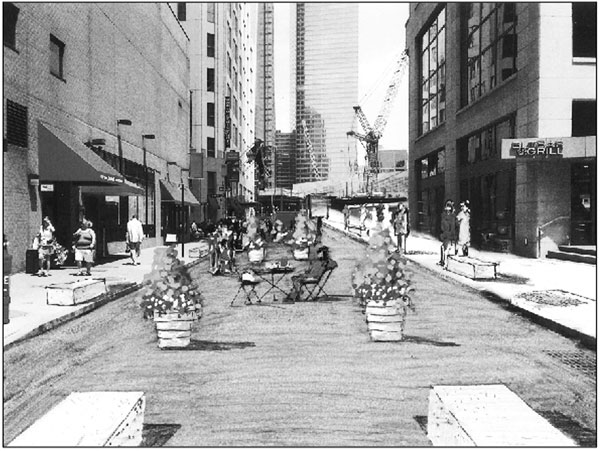
While the delays and debates associated with the World Trade Center site, and their political and real estate implications, have been chewed over to exhaustion, lesser attention is given to the impact on the surrounding historic neighborhood and the people who live there.
And the Lower West Side of Manhattan, between Battery Park and the 9/11 Memorial, is indeed an important part of New York City. Although only a handful of historic buildings remains, it is one of the oldest locales, and from the 1880s to the mid-20th century it hosted a fascinating history as the cultural and economic center of Arab life in the United States. One block south of the 9/11 Memorial entrance, at Rector and the once-famous Washington Street, stands a "trinity" of three buildings -- church, community center, and tenement -- that recall this memory. The extreme importance that Arab-Americans attach to this neighborhood is emphasized by the Arab American National Museum's exhibit on "Little Syria" that will be showing at the 3-Legged Dog art space on Greenwich Street this month until May 27.
Current residents of this neighborhood have legitimate grievances, and local businesses and residents have had to make many financial and quality-of-life sacrifices over the last decade. On top of concerns related to the endless construction, the City's various "hacks" to deal with congested overflow from the 9/11 Memorial have largely failed to gain support because they do not engage the local community, and therefore offer few amenities in return for the inconveniences. Currently, 10,000-15,000 tourists every day enter and exit the 9/11 Memorial at narrow Washington and Albany Streets, at the northern entrance of the "Little Syria" neighborhood. One proposed solution to improve the tourist experience that the City developed several years ago was a pedestrian plaza with granite slabs, chairs, and an informational kiosk: a "Washington Street Plaza" on iconic Washington Street between Albany and Carlisle. Yet this project has been delayed for years now because, among other reasons, of fierce Community Board One resistance to closing part of Washington Street, inconveniencing and potentially endangering residents, in order to facilitate an expanding footprint for what is now being called the World Trade Center "Campus."

NYC Department of Transportation Drawing of "Washington Street Plaza"
Yet, with the window of the mayoral administration's impact expiring and the hurricane having diverted construction crews last fall, Jeffrey Mandel, an adviser to Deputy Mayor Robert K. Steel, told the Tribeca Tribune, "We think it's important to make our best efforts in our last hours in the neighborhood." And he told the Downtown Express that "[the plaza] pushes a couple of big dominos forward by creating a place that's not just attractive and desirable for the folks down here but that has beneficial impacts in the way of mitigation."
As "Friends of the Lower West Side" and "Save Washington Street" advocates who wanted to request that a basic historical sign or piece of artwork for the extraordinary Washington Street history be placed in the "Washington Street Plaza" and who appealed to the Community Board, we learned the hard way that local residents see little attractive or desirable in these plans. Indeed, the Financial District committee of Community Board One insisted that all references to the "Washington Street Plaza" be removed from our proposed resolution because they were not prepared to accept that this Plaza project is still happening. While they passed an adapted, generic version of the resolution unanimously, how all of these issues will be addressed at the full Community Board One meeting on Tuesday, May 28 remains to be seen.
As advocates for the preservation and the recognition of Little Syria, we have no desire to interfere with the City's, the 9/11 Memorial & Museum's, or the Downtown Alliance business improvement district's overall plans for the Little Syria neighborhood, which have been proffered under the renamed appellation "Greenwich South." The Downtown Alliance has been cooperative in contemplating how to place historical signage on Washington Street, and the 9/11 Memorial & Museum, and their curatorial team led by Jan Ramirez, is exploring how to incorporate the "Little Syria" history into their exhibits and programs. We are largely concerned with only three buildings and their recognition by Robert Tierney's Landmarks Preservation Commission, and we want to think creatively how to help Mayor Michael Bloomberg, in his "last hours," assert a legacy of recognizing and protecting this historic neighborhood, valued around the world for birthing a renaissance in Arabic literature.
Hence, we suggest that seeking more input into these Downtown projects (including the proposed "Liberty Park"), possibly incorporating the valuable history of the neighborhood into the designs or engaging community groups like the Friends of the Lower West Side in their development, could help secure financial and popular support, expedite their conclusion, and satisfy outstanding anxieties. Past public projects in the neighborhood, such as the Gwathmey Plaza at 123 Washington Street (which was created to compensate for the W Hotel adding more square footage than had been allowed), have faced repeated criticisms after establishment because of these communication failures.
New Yorkers can be mocked for making sport of being confrontational and protective about the handful of blocks that make up their little worlds, but the issues involving the 9/11 Memorial and the "Little Syria" historical memory are too solemn and weighty to be handled in a closed and secretive way. New York City and the residents of the Lower West Side should come together to plan out future public spaces for the Little Syria neighborhood. Incorporating its vibrant history, especially the beautiful literary heritage of Kahlil Gibran and Ameen Rihani, to fashion something iconic and internationally recognized in one of these emerging public spaces would be a powerful gesture at this moment. But let us at least start with an informational sign on historic Washington Street!
Todd Fine, is the co-founder, with Carl Antoun, of the Save Washington Street preservation campaign.
